Virtual vs augmented: which alternate reality is for you?
Let's face it — we're not going to be able to afford both
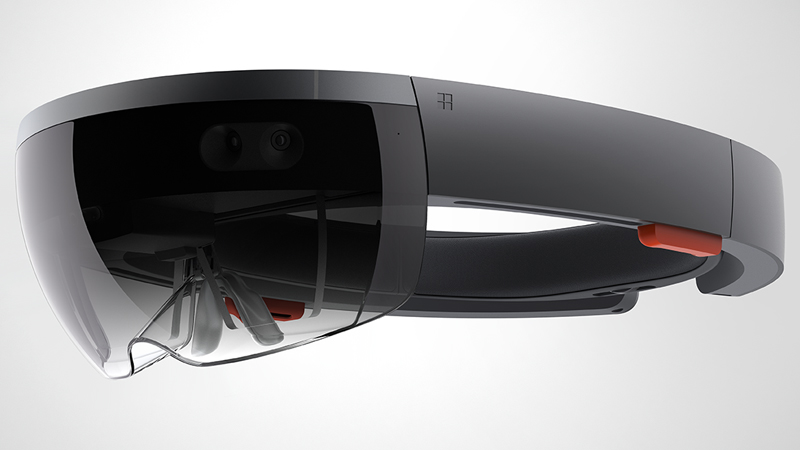
Much like in 1990, we stand on the edge of a reality revolution. Virtual Reality. Augmented Reality. With so many to choose from, who'd stick with boring old actual reality? Only losers who somehow don't want to look like an extra from a cheap cyberpunk movie, that's who.
But which option will be best for you? You're in luck. Here's the complete guide to whether you should be lusting after virtual reality, as headed up by the Oculus Rift and HTC Vive and of course, your head, or augmented reality, where Microsoft is leading the charge with HoloLens and the hope that we've all forgotten the gulf between its promises for Kinect and actually owning a Kinect.
Finally, because we all know the first generation always has a long way to go, we'll be comparing them against the acknowledged standard: Hollywood's idea of what VR *should* be.
But that in a moment. First, the contenders.
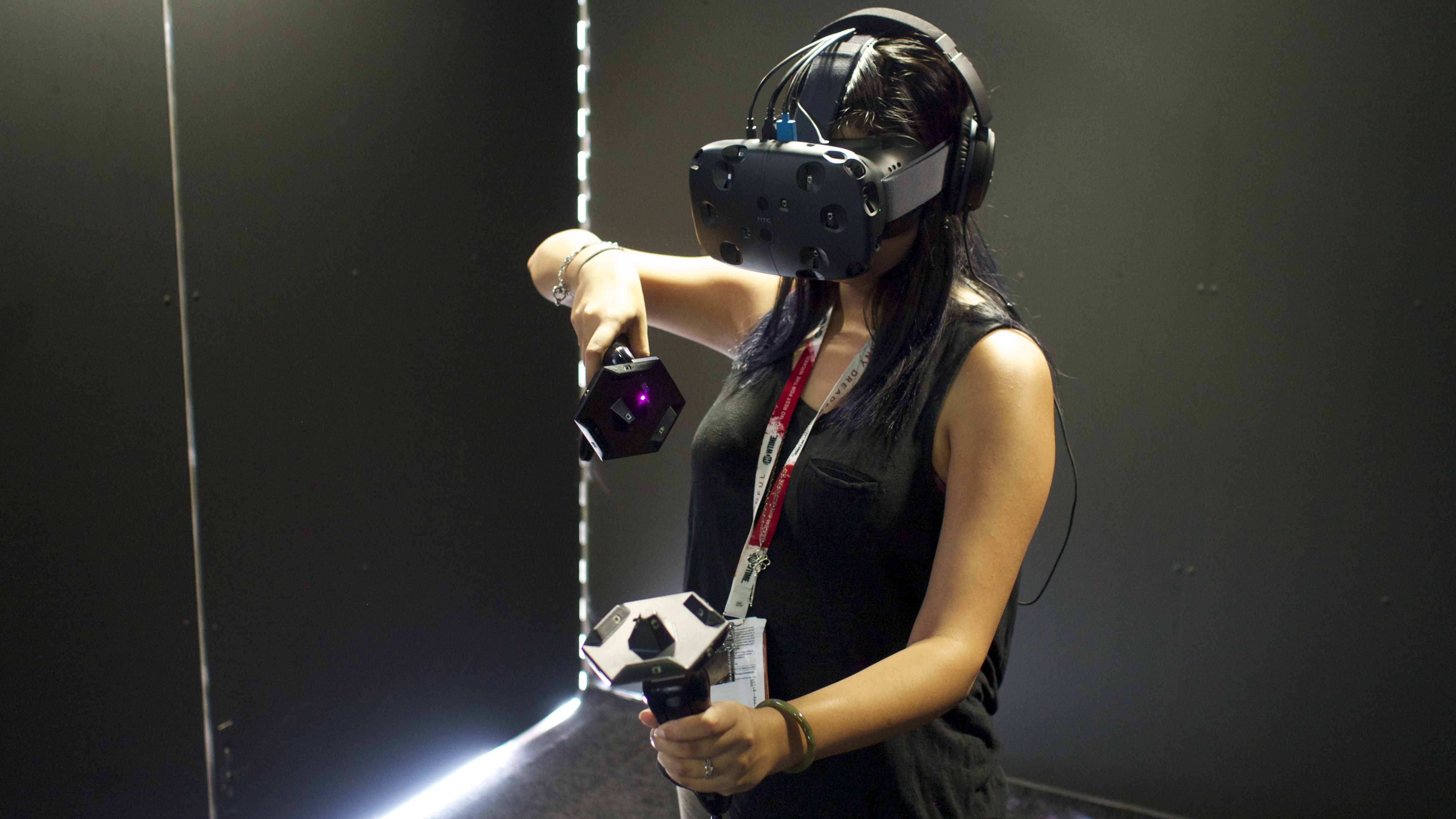
Virtually the same
The basic difference between virtual and augmented reality is that the former completely locks you into the world, while the latter puts stuff on top of it.
Microsoft has shown this off with Minecraft, where you can float your world in the room, and with a game where spider robots come bursting out of the walls, and yet oddly not with the first experience that 99% of developers are going to try to be first with, which is putting a porn star on your sofa.
Not even in a demo with the chick from Hologram: Time Traveller, which is basically the HoloLens gaming experience from the point of view of an easily amused giant.
Get daily insight, inspiration and deals in your inbox
Sign up for breaking news, reviews, opinion, top tech deals, and more.
Let's stick to what we've actually seen though, those stage demos that Microsoft's been doing. From those, we can tell that while virtual reality is trying to appeal to the cool kids of the 90s, this is going for a more… let's say, mature gamer. Patient gamer. One willing to move incredibly slowly and not make too many sudden moves even in demonstrations supposedly about exciting action, for reasons I see no reason to assume are anything other than personal playstyle.
It's cool technology to be sure, though questions definitely remain. For instance, will the final HoloLens rig ship with that helpful man with the big camera who helps deflect questions like what the actual field of view is?
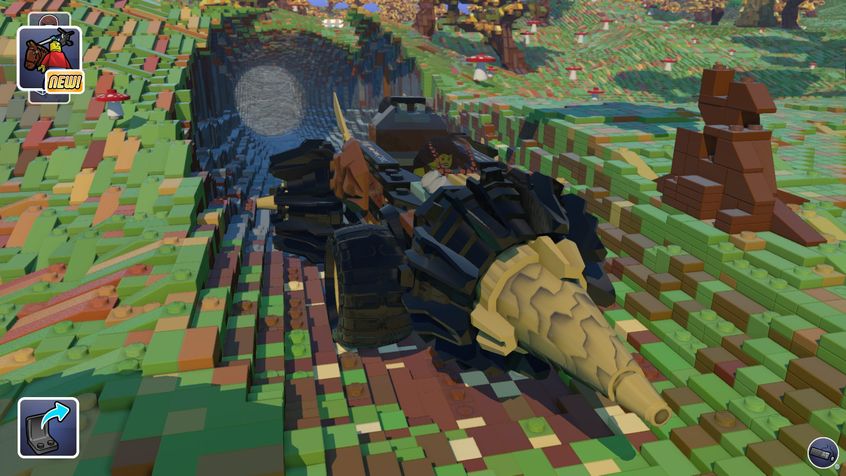
Or a carefully laid out stage that you can put in your garden to show it off at its best in ways that your messy front room won't? For over $3,000, it had bloody well better. Sure, it lets you put your Minecraft world on a table, but so will $3,000 of Lego. Just saying.
HoloLens is just one example of augmented reality though, with others on the way - or indeed, here, if you don't mind looking through your phone instead of donning a proto-Borg costume.
The biggest draw for games is that the whole world immediately becomes your playground, even though companies like Ubisoft have yet to seize on the potential of Assassin's Creed: Your Kitchen or Far Cry: Primark.

Still, we can all agree that it's probably pretty cool if you do happen to live on a spaceship, in an abandoned military base with a portal to Hell in the basement, or one of those fantasy worlds where magic and science co-exist, because recharging batteries is a real bugger when all you've got are lightning spells.
It will probably be possible to go out into the world with the gear on and sample more interesting pursuits, but only at the expense of suddenly making Google Glass users seem like masters of style and subtlety. And nobody wants that.
Be an optimist
For most gamers, it's clearly virtual reality that deserves the optimism and money right now. Here, the basic approach is that you wear a great big helmet on your head, which forces you to stare at a mobile phone screen even more than waiting for a return SMS after a mixed first date, while asking you to pretend that it's not actually a mobile phone but some kind of magic portal.
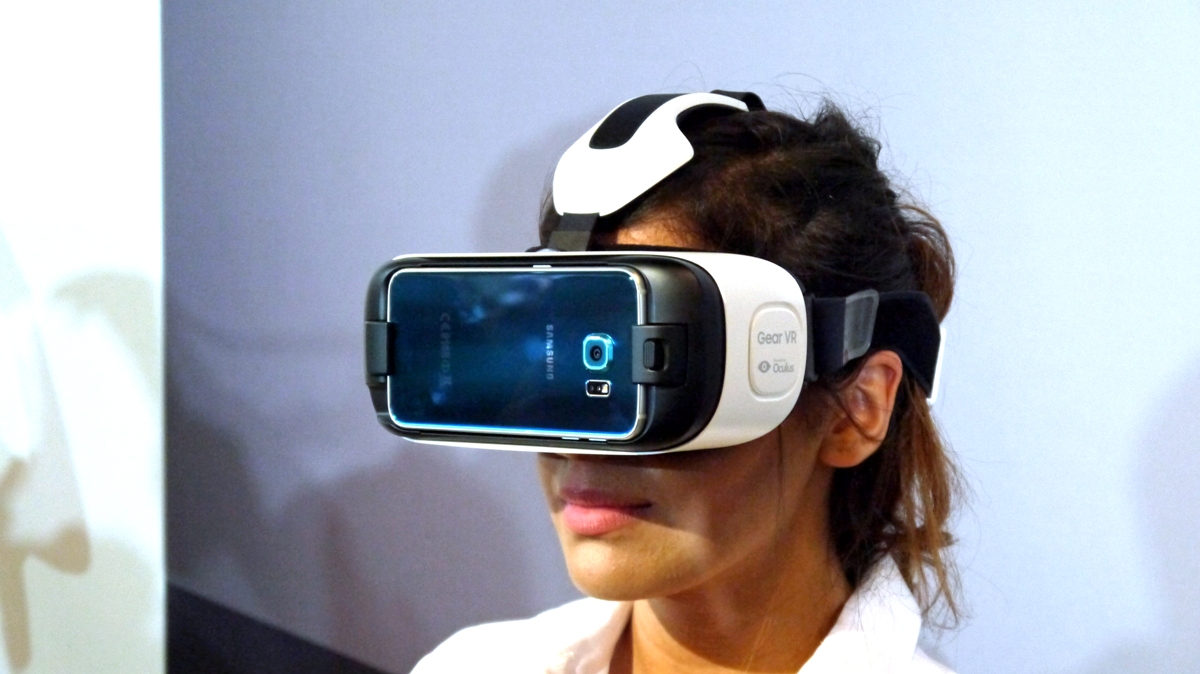
The immersion comes from being completely sealed away from the mundane world, unless you trip over your cat or turn around too many times and end up strangling yourself with the cord, with the stereoscopic view allowing a genuine sense of both space and presence.
It does however help though if your idea of exploring incredible new worlds involves wearing a diving helmet, or if you're willing to Botox your eyeballs to prevent them looking anywhere but straight forward.
Nevertheless! Without being constrained by material concerns, with the exception of walls and cable length, you're finally ready to step into the future, while your family and friends pass the time taking photos and putting them on Facebook with titles like "BEHOLD THE CYBER COMMANDER!" and "MALCOLM SAVES THE PRINCESS (OUR HERO)". This will be particularly awkward when 'peripherals' start to enter, among other things, the picture.
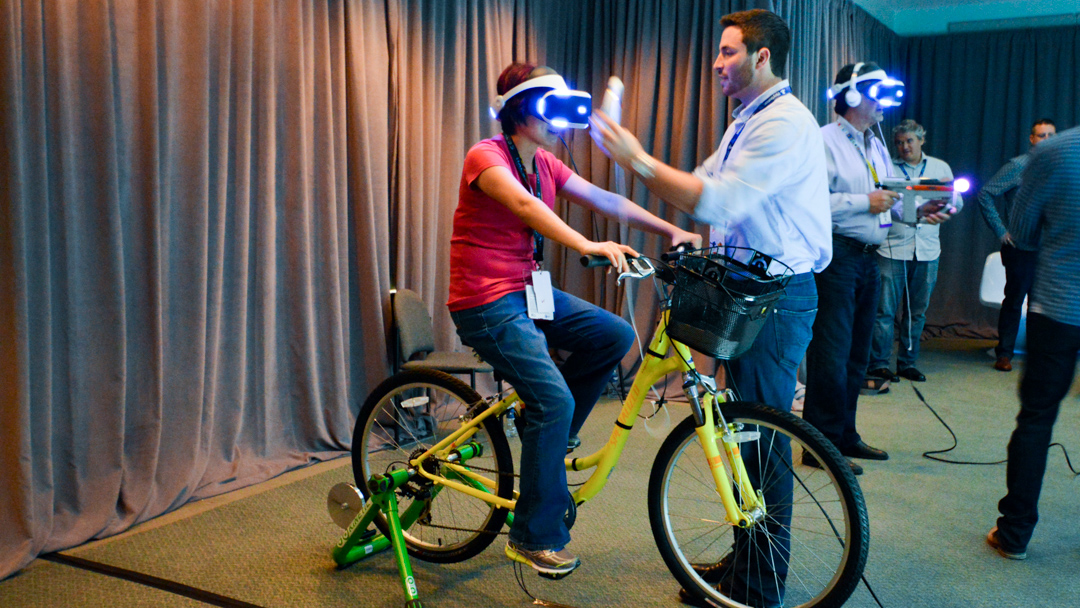
Still, having used a few VR headsets, it's safe to say that when they work, the experience is like nothing else, unless you count doing other cool stuff while getting the first twinges of a headache.
The first commercial generation will hopefully put less emphasis on the last bit, though even after years of development and with an estimated $350+ price for the first Oculus Rift, everyone involved does encourage you to keep your expectations reasonable.
Technical limitations include the heat generated by the screens by your head, relatively low resolutions compared to what the regular human eye can conceive, and despite years of research, the fact that if you die in the game, you do not in fact die in real life. This is obviously still planned, but so far even the VR pioneers have been forced to settle for merely taking their testers out and shooting them every time they fail. This it turns out is a big reason why they take so damn long to develop.
Still, there's time, even with the upcoming debuts. Oculus in particular has been quick to say that the first generation of virtual reality, while a good starting place, is merely a new beginning for the technology.
Future eye lands
There's every hope that in 10 years we won't simply be staring at mobile phone screens, but instead be dialling in as God intended - with wires, spinal ports, and not before checking to see if McAfee has released new security software to stop our brains being hijacked by evil but sexy villains with a penchant for sweltering under a whole cow of leatherwear. That's the future we need, even if Hollywood's visionaries did generously think we'd be there by 2000.
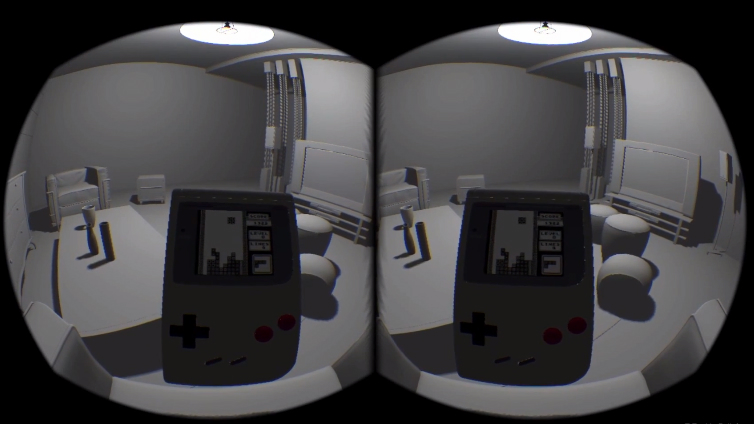
While we wait for all of that though - economic crashes, pollution, global warming, government corruption… all the other pieces are coming together nicely - what's to be done? Certainly, the potential of virtual reality makes for a more compelling vision of the future than a boot stamping on a human face forever, or, as it would be tagged on Steam, "walking simulators FOR MEN."
Whether it's Oculus or Vive or Sony VR or whatever else that ends up defining it though, we can be hope that it stays true to the promise of the genre - incredible worlds, endless potential, and perhaps not the usual sticking points of worlds that look suspiciously like cheap sets with Photoshop filters or the kind of 3D graphics you'd expect from a rejected Reboot artist's demo reel. (Don't feel too sorry for them. They're at least still getting work on Heroes Reborn.)
It's the future. It's coming soon. However you choose to see it.